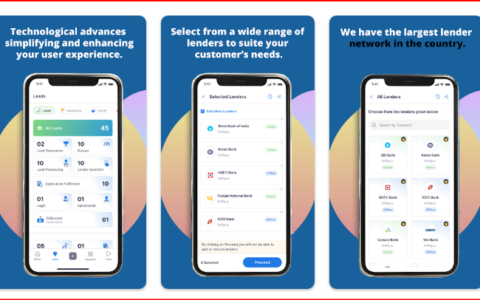
In the digital age, where websites have become the face of businesses, ensuring a quality user experience is paramount. Web testing plays a crucial role in achieving this goal. Through comprehensive testing, organizations can identify and resolve any issues or bugs that may hinder the user’s interaction with the website.
By conducting thorough web testing services, businesses can guarantee that their website functions optimally across various platforms, browsers, and devices. This is especially important in today’s mobile-driven world, where users access websites on smartphones and tablets. Additionally, web testing allows organizations to assess the website’s performance under different traffic loads, ensuring it can handle the demands of multiple users simultaneously. Overall, by prioritizing web testing, organizations can provide a seamless and enjoyable user experience, leading to increased customer satisfaction and retention.
Common Challenges Faced in Web Testing and How to Overcome Them
One of the common challenges faced in web testing is the ever-evolving nature of technology. Keeping up with these updates can be overwhelming and time-consuming for web testers. To overcome this challenge, it is important to stay updated with the latest trends in technology and conduct regular compatibility testing to ensure that the website functions seamlessly on different platforms. Additionally, leveraging test automation tools can significantly speed up the testing process and increase efficiency.
Another challenge in web testing is the diverse user base that websites cater to. This diversity makes it difficult to accurately simulate real-world scenarios during testing. To overcome this challenge, web testers should prioritize user-centric testing. Conducting user acceptance testing with a diverse group of users can provide valuable insights into the user experience and help identify any usability issues.
Exploring Different Types of Web Techniques and Their Benefits
Web testing is an essential part of ensuring the quality and user experience of a website. By exploring different types of web testing techniques, organizations can proactively address potential problems and deliver a seamless browsing experience to their users.
One of the most common web testing techniques is functional testing. This technique focuses on verifying that each function of a website works as intended. It involves testing features such as forms, links, buttons, and navigation to ensure that they perform the desired actions and produce the expected results. Functional testing helps identify any issues related to user interactions and ensures that the website functions properly across different browsers and devices.
Another important web testing technique is performance testing. This technique evaluates the speed, stability, and responsiveness of a website under different circumstances and loads. By simulating various user scenarios and stress-testing the website, organizations can determine its capacity and assess its performance in real-world conditions. Performance testing not only helps identify bottlenecks and areas of improvement but also ensures that the website can handle high traffic volumes without compromising its usability.
Best Practices for Test Planning and Execution
Test planning and execution are crucial aspects of web testing services that can greatly impact the overall quality of the user experience. To ensure an effective testing process, it is important to follow best practices that have been proven to yield successful results.
One key practice is to start with a solid test plan. A well-defined test plan outlines the objectives, scope, and approach of the testing process. It identifies the test cases to be executed, the resources required, and the timelines for each phase. A comprehensive test plan sets the foundation for a structured and organized testing process, ensuring that every aspect of the website or application is thoroughly covered.
Another important aspect is the execution of the test plan. Careful attention should be given to proper test environment setup, including the selection of appropriate hardware, software, and network configurations. This ensures that the testing environment closely replicates real-world conditions and provides accurate results. Furthermore, effective communication and collaboration among the testing team members are vital to ensure efficient execution. Regular meetings, progress tracking, and timely reporting can help streamline the process and address any issues or concerns in a timely manner.
By following these best practices for test planning and execution, web testing services can ensure that the tested website or application meets the highest standards of quality and delivers an exceptional user experience, resulting in increased customer satisfaction and loyalty.
Key Factors to Consider when Selecting a Web Testing Service Provider
When it comes to selecting a web testing service provider, there are several key factors that need to be carefully considered. First and foremost, it is essential to evaluate the expertise and experience of the provider. A reliable and competent web testing service provider should have a team of skilled professionals who possess in-depth knowledge of various testing methodologies and tools. They should also have a track record of successfully delivering high-quality testing services to clients across different industries.
Another important factor to consider is the range of testing services offered by the provider. A comprehensive web testing service should include various types of testing, such as functional testing, performance testing, security testing, and compatibility testing, among others. It is important to ensure that the provider has the capability to conduct all the necessary tests to ensure the quality and reliability of your web application or website. Additionally, the provider should have a proven process in place for identifying and addressing any issues or bugs that may arise during the testing phase, ensuring that your web application or website is thoroughly tested and ready for deployment.
The Role of Automation in Web Testing and its Advantages
Automation in web testing plays a crucial role in ensuring the quality and efficiency of the testing process. By utilizing automated tools and frameworks, web testers are able to streamline and accelerate the testing process, leading to faster time-to-market and improved user experience. One of the key advantages of automation in web testing is that it allows for the execution of repetitive tasks with minimal human intervention. This not only saves time but also reduces the risk of human error, resulting in more accurate and reliable test results.
Additionally, automation enables web testers to conduct comprehensive and thorough tests on a large scale. With automated tools, testers can simulate multiple scenarios, test various combinations of inputs, and validate the system’s response, all in a fraction of the time it would take to do the same manually. This level of scalability is particularly important in today’s fast-paced digital landscape, where websites and web applications are constantly evolving and updating. By using automation, web testers can keep up with the rapid development cycle and ensure that their testing efforts cover all necessary aspects of the website or application. Overall, the role of automation in web testing is indispensable for delivering high-quality products and providing an exceptional user experience.
What is the role of automation?
Automation plays a crucial role in web testing by automating repetitive tasks and allowing for faster and more efficient testing processes.
What are the advantages of using automation?
The advantages of using automation in web testing include increased test coverage, faster test execution, improved accuracy, scalability, and the ability to perform regression testing easily.
Can automation completely replace manual testing?
No, automation cannot completely replace manual testing. Manual testing is still necessary for certain scenarios that require human intuition and creativity.
Some popular automation tools used in web testing include Selenium, Cypress, Puppeteer, TestComplete, and Appium.
Does automation eliminate the need for skilled testers?
No, automation does not eliminate the need for skilled testers.
How can automation help in reducing testing time and effort?
Automation can help in reducing testing time and effort by executing tests quickly and consistently, allowing testers to focus on more complex and critical aspects of testing.
Is it cost-effective to invest in automation for web testing?
While there may be initial setup and maintenance costs, automation can significantly reduce the time and effort required for testing, leading to cost savings over time.
Some challenges associated with automation in web testing include the initial setup and maintenance of automated tests, handling dynamic web elements, and ensuring the accuracy of test scripts.
Factors to consider when selecting a web testing service provider include their expertise and experience in web testing, their ability to handle the specific needs of your project, their track record of delivering high-quality results, and their level of customer support.



